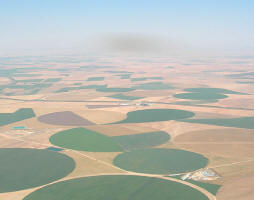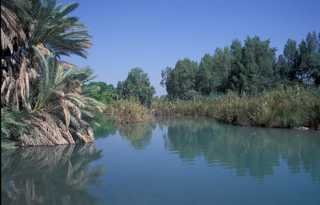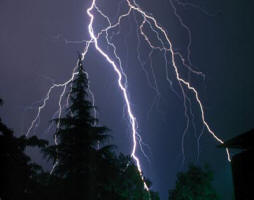 Preliminary study 1/2, Naples 1997
Preliminary study 1/2, Naples 1997
| Released | 10/05/2006 |
|---|
Water management requires the best possible knowledge of existing actors, programs, techniques and methods used, available tools and documentation, results of research, training opportunities, etc ...
The information available on the above only exists, at either international or national level, in a fragmented, dispersed and heterogeneous way.
Therefore it is necessary to make an effort to rationalize and make this information readable, easily accessible and available.
This is the reason why, during the Marseilles Euro-Mediterranean Conference on Water Management (November 1996), the representatives of the 27 countries, signatories of the Barcelona Convention (November 1995) and the European Union and Commission decided to study the setting up of an information system that would facilitate access to information by using modern communication means and networking already existing systems.
"Documentation", "Training", "Research-Development", "Institutions" and "Data management (tools and methods)" were chosen as priority topics of exchange that could strengthen a Euro-Mediterranean dialogue, with other topics that should be later integrated into such a system.
During the Marseilles conference (November 1996), a working group of 10 countries (Algeria, Cyprus, Spain, France, Italy, Jordan, Malta, Morocco, United Kingdom, the Palestinian Authority), coordinated by France, proposed to carry out a preliminary study that mainly aimed at studying the conditions for the setting up of this system, called "EMWIS: Euro-Mediterranean Information System on the Know-how in the Water sector".
This working group carried out its work from January 1997 to November 1997. It met in Amman (Jordan) in April 1997 and in Valencia (Spain), on October 1, 1997 and will present its conclusions in Naples (Italy) in December 1997 during a conference that will regroup the water managers and other main operators of the 27 countries that could be involved in the project.
This document presents the conclusions of the preliminary study. It includes:
- A presentation of EMWIS
- An analysis of the present situation;
- Proposal for the structure and development of EMWIS;
- Cost estimate for the implementation and financing during the first 3 years.
EMWIS is a tool for cooperation between Euro-Mediterranean countries, that aims to:
- Facilitate access to existing information on know-how in the water sector;
- Develop the sharing of information while permitting everyone to make known its responsibilities, activities, concerns and topics of interest ...;
- Elaborate common outputs and cooperation programs to develop available information and promote the collection of missing information.
Its setting up implies an active participation and the sharing of information and experiences of the partner countries involved in the system.
From a technical point of view, the definition that may be chosen is as follows:
| EMWIS is a Euro-Mediterranean system of shared and approved information on know-how in the water sector. |
This definition comprises 4 significant concepts:
1. An Euro-Mediterranean information system:
Above all, EMWIS is concerned with the information available in the 27
countries, signatories of the Barcelona Convention: the 15 countries of the
European Union and the 12 countries of the Mediterranean.
2. The information is shared :
The word "shared" means that:
- information is provided by the various countries or by international information sources that participate in the system;
- information remains at the level of the providers and is not centralized in a central data base.
3.The information is approved :
Only the information sources having been granted a "quality stamp" by
EMWIS managers, will be accessible through this system. The
information quality, updating and reliability will be guaranteed by each
information source.
4. The information is relative to "know-how in the water sector":
The term "know-how in the water sector" is the main characteristic of EMWIS. in the water sector" is the main characteristic of EMWIS. It means that: It means that:
- EMWIS is only giving access to information on "know-how", for instance:
- Institutions and experts that intervene in the water sector;
- Documentation in the water sector;
- Research and development programs;
- Training opportunities:
- Methods and techniques used for water resources management;
- ....
- EMWIS does not manage data on water resources or on uses. It is not planned that EMWIS could contain data on:
- surface water quality (for instance: pH, conductivity, dissolved oxygen...);
- quantitative aspects (examples: river flow rates, aquifer piezometry...);
- withdrawals and uses (examples: list of water intake points, irrigated areas ...);
- discharges (discharge locations, quality of discharged water ...);
- .....Therefore EMWIS is neither a data base on water resources nor a tool for water resources management.
- Generally speaking, EMWIS manages information and not data.
EMWIS, owing to its original approach towards "know-how" in the water sector, is complementary to many international actions that are carried out in the Euro-Mediterranean countries and that usually deal:
- either with the management of data on water resources in particular (European Environmental Agency, MED-HYCOS ...);
- or with a particular aspect of "know-how" (training, directories of local experts, ...).
In order to develop a potential synergy, a close collaboration with these international programs is to be planned.
EMWIS mainly addresses public and private operators of the Water sector: decision-makers and professionals (technicians, consulting firms, training centres, document draftsmen...).
However, as agreed at the Marseilles meeting "access to information made available through the system will be open to anyone who is interested in water management issues" (association, media, ... and the general public).
IIIA. Assessment of the situation of information search on Internet
Generally speaking, access to information servers on Internet is nowadays the most used means for the search of information. Navigating on the sites concerned with a given sector is a good work basis. The hypertext links often enable to discover other sites in the same sector of activity.
Discussion forums (News server via NNTP protocol) offer an interactivity and a variety of subjects per topic: the forum is one of the keys for accessing to hidden information. Thus, navigating with the help of search engines is useful. Discussion forums are often access free.
The use of a Web navigator that integrates a client of electronic mail and forum management provides access to a considerable volume of information.
However, the use of the above-mentioned services causes quick disappointment, as:
- SOME SECTORS ARE STILL WEAKLY COVERED
While computer science or finance are omnipresent on Internet, the number of WEB servers is much more limited on other topics, water in particular.
- ACCESS TO USEFUL INFORMATION REMAINS DIFFICULT
The indexing made by standard search engines is not sufficiently intelligent and detailed for an in-depth search. The results thus obtained are often disappointing, either due to the volume of poor information, or due to the lack of relevant sites. The volume of poor information is such that it is usually necessary to resort to qualified staff to extract the really useful information.
- THERE IS NO QUALITY GUARANTEE ON THE INFORMATION THUS OBTAINED
As Internet success is linked, for a large part, to its free access, either for consulting or dissemination, it is often difficult to assess information relevancy. In addition to the deliberate disinformation that is used in some sites as regards rival technologies, it is frequent to find Web sites whose information is not up-dated, or whose hypertext links lead to nothing (the link is not operational, the referenced page has disappeared...).
This is the reason why many, more or less, specialized services (financial and technical data, general news ...) are, from now on, available on Internet, and, for a fee, offer better targeted contents than the public sites.
Having complete and good quality information available for the officers in charge of water policy and various operators, requires the use of a homogeneous and efficient institutional system: EMWIS.
IIIB. Analysis of expectations and available information per topic
During the Amman meeting (April 1997), the working group of the 10 countries decided to define EMWIS specifications, using thematic reflections in four fields which will be led by groups of partner countries that proposed themselves to do so.
4 thematic groups have thus been created:
| TOPICS | Partners in thematic groups |
| 1- Documentation | France* , Jordan, Morocco Palestinian Authority |
| 2- Training / research and development | Cyprus, Italy*, Malta |
| 3- Institutions | Algeria, Cyprus, Spain*, Morocco |
| 4- Data Management | Malta, United Kingdom*, Palestinian Authority |
* Leader of the thematic group
In liaison with the International Office for Water, each thematic group prepared questionnaires in order to mainly evaluate the expected information and the range of available information on each topic.
These questionnaires were sent to the other countries of the working group and to various specialized organizations. The replies obtained were summarized in reports presented in the appendices.
This chapter summarizes the orientations given by each group.
1. The "documentation" group:
The replies sent by the 10 countries of the working group emphasize the
following :
- There is a strong interest for access to documentation on water in three main forms: global or aggregated information, precise and detailed information, synthesis of the art;
- The potential users wish to have user-friendly and quick search tools with relevant replies;
- The possibility of accessing basic documents is also requested;
- The available information must be validated and updated by the concerned organizations.
2. The "training, research and development" group:
The questionnaire of this group focused on the three following fields:
potable water, irrigation and resources management. The analysis of the
replies sent by 8 countries (out of 10) emphasizes the following :
1. EMWIS will be intended for, at least at the beginning, governmental institutions, research and training centres and universities in particular. The interest of the private companies and local water management organizations for EMWIS has not been thoroughly studied.
2. The future users of EMWIS expect, as regards system operation: the use of key-works and hypertext, the telematic transfer of data and documents and the automatic dissemination of information up-dates;
3. The most interesting sectors on which a lot of information is available are :
- aspects related to water demand management (prevention and reduction of water losses, development of low water consumption irrigation techniques, wastewater reuse for irrigation and non-potable uses, ...);
- sustainable management of water environment (control of water quality, use of information systems for water resources management, environmental impact of water projects, ...).
4. The exchange of information will favour not only the transfer of research results, knowledge of interesting events such as: congresses, seminars and training courses, but will also be a tool for the setting up of research networks and joint training programmes. The result, the most expected by EMWIS users, is, in fact, to get acquainted with the research and training activities that are jointly carried out by several countries or international networks. Therefore, it is expected that EMWIS will favour the participation in joint activities of organizations of several countries and in cooperation programmes at governmental level on research and training topics. Very efficient actions will be undertaken for the transfer of knowledge.
To summarize, the study emphasized that EMWIS will be a very important communication tool for a Euro-Mediterranean dialogue by way of topics on Research and Development and Training in the water sector.
3. The "institutions" group:
The replies, sent by 7 countries to the questionnaire of the
"institutions" working group, emphasize the following :
- The expectations as regards EMWIS mainly come from public institutions, research and training centres that wish to get access to information on equivalent administrations in the other countries;
- The potential users of information on legislation are, above all, central, regional and local administrations.
4. The "data management" group:
The questionnaire of the "data management" thematic group focused on the
following fields: potable, industrial and irrigation water. The 10 countries
of the group replied to the questionnaire. The replies obtained emphasize
the following :
- Most of the countries of the working group have detailed information on the management of data on potable water;
- Information relative to the management of data on industrial water and irrigation water is less detailed, but will nevertheless be very useful for the potential users of EMWIS information system.
IIIC. Synthesis of the study on communication networks
Following a series of visits in France, Morocco, Spain,
Italy, Jordan, Cyprus, Malta, the United Kingdom and the Palestinian
Authority and a meeting with representatives of DGXIII, the conclusions of
the expert in charge of the study can be summarized as follows:
1. The 27 countries are already connected to Internet and the computer equipment used in the countries is relatively homogeneous (PCs under Windows with Office, Access, Oracle, Arc info software are most often used);
2. The phenomenon of fast expansion which is at present the characteristics of Internet is originating many dysfunctionings: for instance, it has been noted that the networks are often overloaded and this implies very long response times;
3. The improvement of the communication efficiency can be envisaged in three ways:
- the use of commercial Internet networks with a service guarantee
(Concert, Global One, World Partners) with line rental;
- the resort to research networks: Ten34 (funded by EU at 40%) and Raitnet
(UNESCO);
- the use of environmental networks (EIONET, MED HYCOS);
4. The yearly costs for connection to a WEB server are estimated as follows:
| TYPE OF CONNECTION | Estimated cost in ECU/(year x site) |
| 64 kb/s | 12,000 to 17,000 |
| 128 kb/s | 30,000 |
| to a commercial service provider (with guarantee) | <= 120,000 |
| TEN-34 | About 50,000 (1st estimate) |
# Conclusions
| The use of research networks such as TEN-34 and RAITNET is recommended to improve communication between the partners of EMWIS network. |
|
|
| Solutions for the connection of some countries (Cyprus,
Israel, Malta, Turkey) that are not served by these networks will have
to be studied on a case by case basis. Malta and Cyprus, owing to their
geographical situation and their technological advance, could play an
important role of relay between both shores of the Mediterranean by
realizing high speed liaisons between TEN-34 and RAITNET. |
|
It is recommended to the National Focal Points (a concept defined in Chapter IV) to request a connection to one of these two networks.
 you are not logged in
you are not logged in





